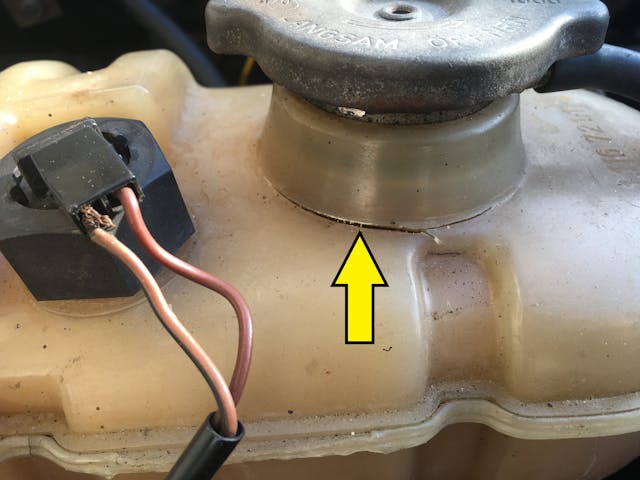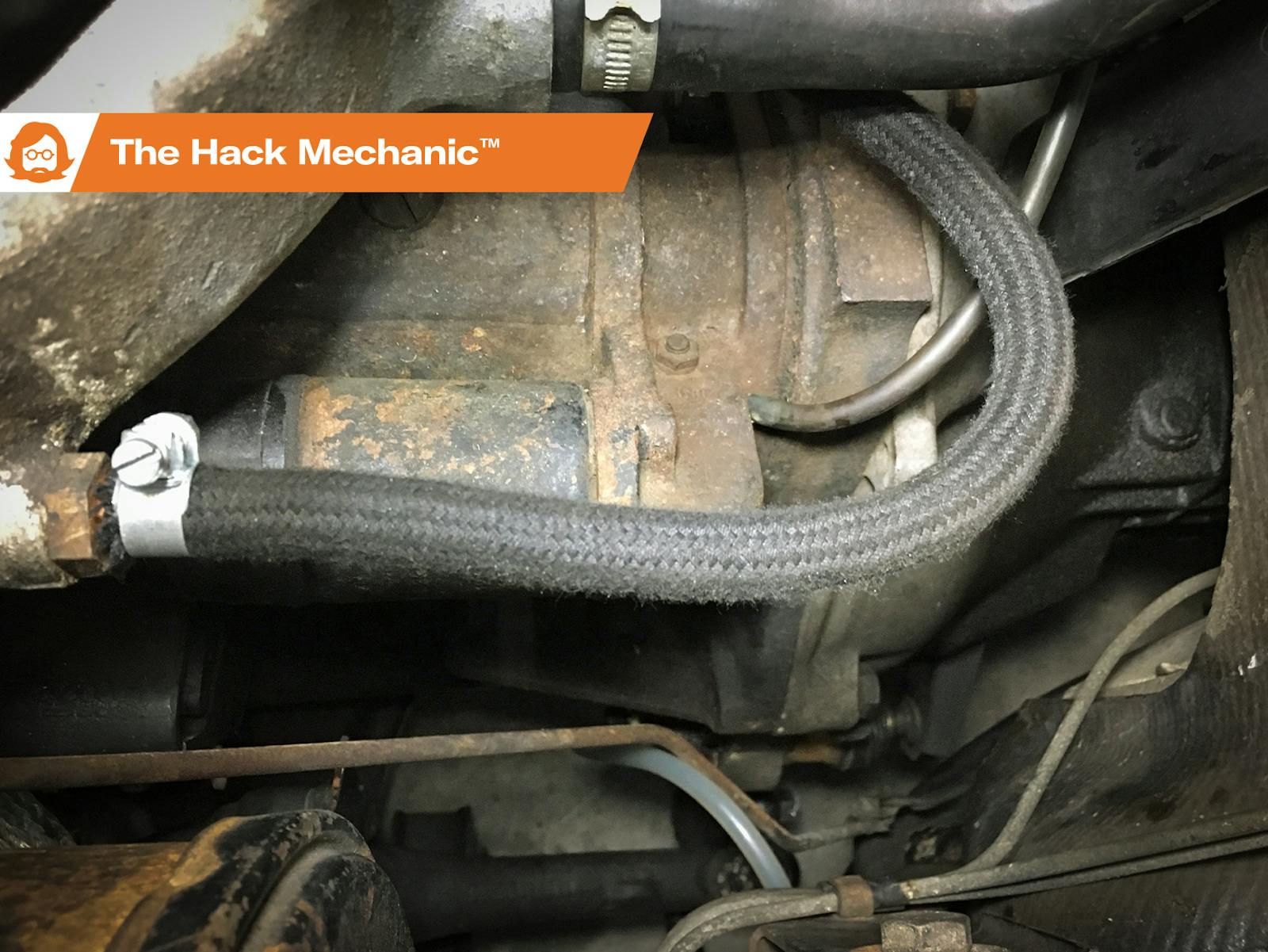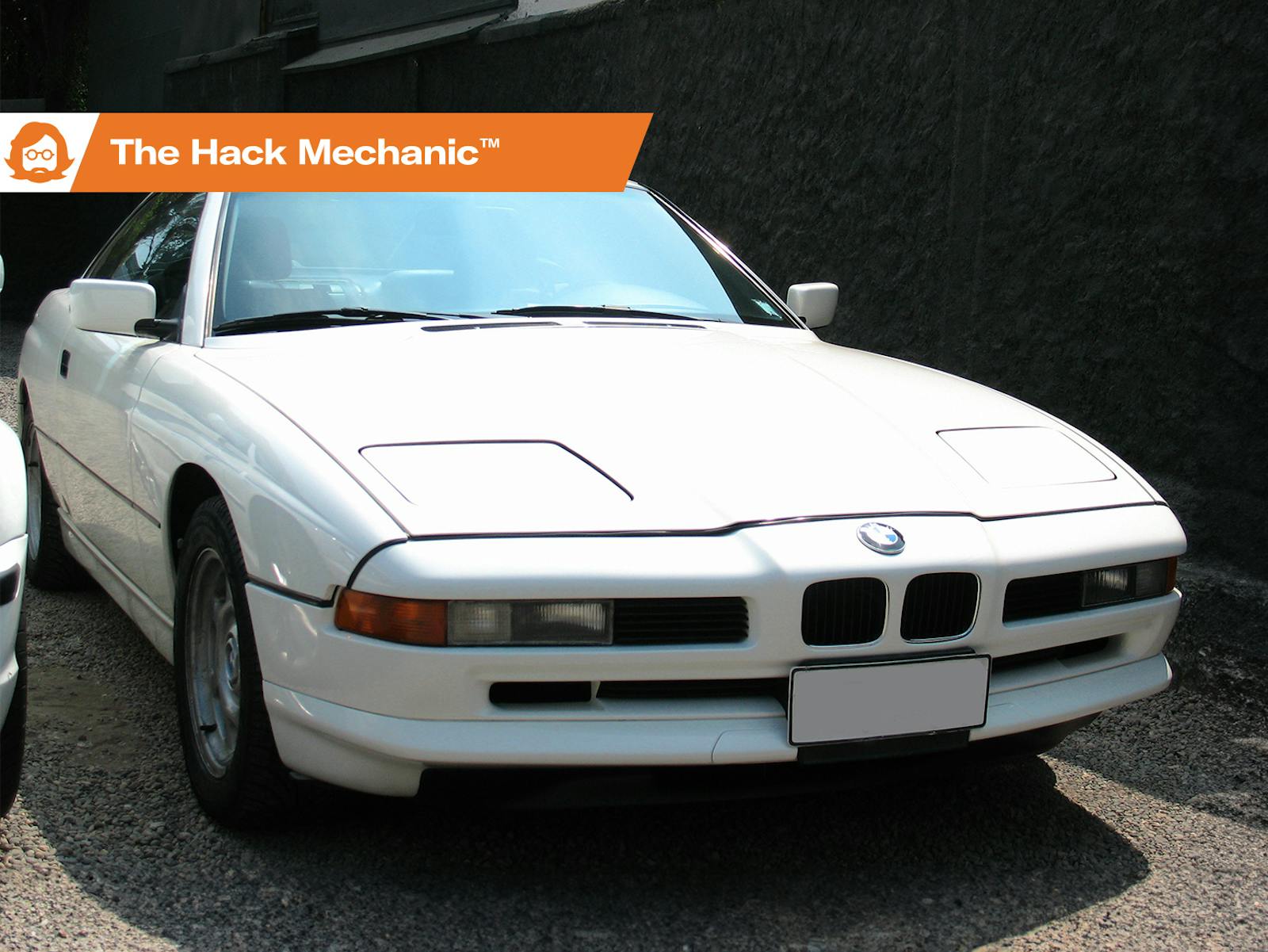This is the best pay-it-forward story ever

In my first book, Memoirs of a Hack Mechanic, I wrote about the taxonomy of a hobby. That is, if you find some hobby where there’s a physical object, an activity, and a social component, and you’re attracted to all three, you wind up getting sucked in, and the hobby becomes a passion. This is obviously the case with me (and almost certainly you) with cars, but it holds for most hobbies.
For example, my wife is an avid quilter, and all the things I do with cars have their counterpart in the quilting world. One of the wonderful things that comes from being part of a community of people with a shared passion is the sense of human connection. We tend to inherently trust people who love the same things that we love. This often translates into a near-automatic sense of kindness and generosity. Obviously that can happen without the shared interest (and the world would be a far better place if that happened more often), but if you’re into vintage cars, and like working on them, and you see one broken down by the side of the road, of course you’re going to stop and help.
It’s a beautiful thing to be either the giver or the receiver of this kind of automotive grace. The fine tradition is to “pay it forward”—that is, if someone helps you and doesn’t charge you for it, you then help someone else. When this happens, no matter which end of it you’re on, you can almost feel yourself putting your oars into the spiritual water that keeps the world, or at least our little corner of it, going ‘round.
In 2019, I was at the BMW event “The Vintage” in Hot Springs, North Carolina, a tiny little town up in the mountains about 50 miles north of Asheville, when a man approached me. “Something went wrong with my car as I was heading down the last set of switchbacks,” he said. “I heard something go whump-whump-whump-whump-WHACK, then saw black pieces trailing away behind me in the rear-view mirror. I asked around, and people said that you and your friend Paul Wegweiser are apparently the people to ask about field fixes.” He apologetically said, “I found you first.”
What he was describing was the textbook symptom of the giubo (pronounced “GWEE-bo”) going bad. It’s the rubber donut connecting the transmission output flange to the driveshaft input flange, a common wear-and-tear part on vintage BMWs. I lay down next to his car on the grassy field where 600 vintage BMWs had assembled in Hot Springs, stretched my arm up as far as it would go, and laid my fingers on the giubo. Sure enough, I could feel that there was a piece missing.

I had a spare giubo with me, and told the gentleman that I’d replace his if he found a shady place with a cement floor—that is, for safety reasons, I wasn’t going to jack up the car and crawl under it on grass or dirt. Plus, it was beastly hot out, and a car can easily tip off jacks and stands if they sink into asphalt. At the end of the day, he circled back with me and said that he found a local Porsche guy who lived less than a mile away and said he had a small barn with a cement floor we could work in. So we babied his car over to the Porsche guy’s barn and I began to have at it.

Replacing a giubo isn’t terribly difficult, but the eight nuts holding the bolts to the two flanges are 17mm nylocs, so once they’re loosened, they don’t just spin off; you have to keep wrenching down the entire extent of the threads. That, combined with the need to raise the rear wheels to turn the giubo to access the bolts at the top, the need to rotate the nuts and bolts only on the metal flange and not against the rubber (which means using a wrench and not a ratchet), and the heat in the garage, made it slow going. From wheels-up to wheels-down and done, it was a couple of hot sweaty hours. But I got it done.

The owner was extremely grateful. He tried to pay both me and the guy whose barn we were in. But then the barn owner—a man of few words—said something to the guy. It was terse, direct, and beautiful:
“It’s called ‘pay it forward.’ This is how it’s done. Next time, you help somebody.”
The car owner nodded and put away his wallet. We all shook hands, knowing we’d left this world a slightly better place.

Of course, just because I fix cars doesn’t mean that I’m always on the giving end of “pay it forward.” While driving home with friends from The Vintage the previous year in my 1979 BMW 635CSi, I heard some alarming noise from under the hood, stopped, and found that the cooling fan had shed one of its blades.

I made some phone calls to try and find another fan. Unfortunately, although the car’s M30 inline six-cylinder engine was used in BMWs from 1968 through 1995, there were three different configurations of water pumps, fan clutches, pulleys, and fans, and only the most recent configuration is readily available. So, to fix mine in a timely fashion, I needed to replace not just the fan but everything it attached to. (It’s not as if I had those parts with me either.)
Fortunately, my friend Luther contacted me saying that he was about a hundred miles north of my current location and had all the parts needed for the conversion. With one of the fan blades missing, the fan felt badly unbalanced, and I worried that it could self-destruct and pierce the radiator, so I removed the fan entirely. As long as I was driving on the highway at speed, there would be plenty of airflow, but if I got caught in traffic, I risked overheating the engine and cracking the head. I did a quick hack with the electric condenser fan (the one in front of the radiator for the air conditioning) to allow me to run it without the A/C on to provide some additional air flow to the radiator, but when I tested it while parked, the temperature rose alarmingly. Still, I didn’t have much choice, so I went for it. Fortunately I hit almost no traffic.

When I arrived at Luther’s, he had all the parts laid out for me. More than that, he noticed something I’d missed—my coolant expansion tank was cracked. Amazingly, he had a spare one of those as well.

A few hours of work later, I was on my way with a rebuilt cooling system. I remind all my road trip companions of this whenever we travel—that I am as likely to be the beneficiary of pay-it-forward as the provider.

But really, those two pay-it-forward examples are just the pre-amble. Without them, you’d think I’m trying to write a column merely by printing someone else’s email (below). Here’s the real story …
In early March, I received the kind of email that makes you glad you’ve lived your life a certain way. It is reproduced verbatim below.
***
Hi, Rob. I don’t expect you to remember me, but you saved my butt on the side of the road near BC [Boston College] about 35 years ago.
I was driving my ’76 2002 outside of Cleveland Circle when the engine cut out. I pulled over, opened my hood and started trying to diagnose the issue. I realized fairly quickly that this was not likely to be a “side of the road” kind of repair, and I began to wonder what to do next. I was a broke college student before cell phone ubiquity, so simply calling AAA and waiting for a tow was not an option.
You pulled over a few minutes into my pondering. You got out of your Bavaria, approached me and asked what was going on. I described the symptoms and what I had tried so far. You took a look, had me crank the engine, and almost immediately said I needed a fuel pump. It was near dusk on a weekend, so finding a fuel pump for a ’76 2002 would be really challenging, aside from the fact that I was dead on the side of the road.
Amazingly, you said you actually had a spare fuel pump at your place and offered to swap that one in. You drove me to your home (I believe in Allston/Brighton), got the pump and some tools, and we drove back to my stranded car. You then helped me remove the faulty one and install the replacement. With a quick turn of the oblong key, my car came back to life.
I thanked you up and down and asked what I could do to repay you. You wrote your address on a piece of paper, and said if I could replace your spare fuel pump, we’d be square.
A few days later, I got a new fuel pump and planned to drop that off the following weekend. Then I couldn’t find the piece of paper with your address. I kept the fuel pump in my trunk, and whenever I was in the Allston/Brighton area I’d try to replay the drive to your house in my memory to try and find it. Never found it.
Fast forward all these years and I was looking for an independent BMW shop for repairs to my 2012 X3. Yes, I’ve been a BMW owner consistently since 1985. I went to the BMW CCA website—which I haven’t been to in years—hoping to find a recommendation. In my browsing, I found a post you wrote and immediately recognized your name and photo after all these years. A quick additional search brought me to your website.
So, first of all, thank you for your kindness to a stranded college kid a long time ago. There are many people I’ve helped on the side of the road in the years since, and your example factored into many of these interactions.
Regrettably, my ’76 2002 is long gone, along with the fuel pump still in the trunk. I’d be glad to send you another one if you still want, and most of all I wanted to again thank you for a random act of kindness many years ago. Your act may have had a small impact in the universe, but the ripples remain to this day.
All the best,
Dave Mahoney
No, I did not ask Mr. Mahoney to send me a fuel pump. I rather love the idea that the one that he bought to give to me, and put in the trunk of his now-departed 2002, is still running around in the world, waiting to help someone else.
Oars in the water. Pay it forward. Keep our corner of the world spinning.
***
Rob’s latest book, The Best Of The Hack Mechanic™: 35 years of hacks, kluges, and assorted automotive mayhem is available on Amazon here. His other seven books are available here on Amazon, or you can order personally-inscribed copies from Rob’s website, www.robsiegel.com.


Isn’t it amazing how a simple act of kindness can snowball. Me, as well as most of my friends have done it for years. So simple, yet so important.
When I was at the annual Z Car Convention (ZCON) last year, one of my fellow club members asked me to check his alternator. I took a couple of quick measurements and told him he had a bad alternator. I also introduced him to someone at the convention who owned a Z shop to help with replacing the alternator later in the week.
A day or so later, I received a call from another club member asking me to check on yet another member’s car. I broke out my meters, and in a few minutes, I told her she had a bad battery. She got it replaced at Autozone and had no more problems.
I’m the guy who always has some tools in the back of my car. On rare occasions I need them for my own car, but they are ready to help another Z owner keep driving.
I should add that there have been times that other wrenches have helped me fix problems because they know I will come through for them when they need help. They have helped me build my skills, too.
Powerful experiences all. For historical purposes please include everyone’s name in every photo . . . years from now it would make a difference.
Rob, you and I and many others remember the days of yesteryear when the BMWCCA published an annual? list of owners, their mechanical aptitude, access to a real mechanic, and their ability to offer food and shelter.
Memory Alert!
I just remembered I have one in my blue folder that holds my soon to be Bavaria’s owners manual. It is the 13th edition(perhaps not published annually as I remembered) dated 1999.
It contained members’s telephone numbers, residence and dealer locations in the US.
The not so secret Code:
CODING
WS Working Space
P4 or P6 4 or 6 cylinders
T Tools
R Spare Room or Couch
PM Access t professional mechanic on weekends
C&C Coffee and Conversation
MECHANICAL EXPERTISE:
M1 Professional
M2 Good
M3 Fair
M2 Nil
Here is my listing: Solebury (Near Trenton, NJ
Stephen ONeill (quaint no longer in service land line 215.862.5371 WS T PM M3
Fourty-six pages with an average of 20 names per page = 920 names, all people paying it forward before anyone knew they were. There are listings for Canada, 19, Europe, 4, Iceland, 1, Pacific Rim, 2, Military Addresses, 2, one in Germany the other in Japan.
I have always kept a spare water pump in the trunk and tell any owner who will listen to do the same. I will be selling my 1976 2002 in a month, it will come with a new, in-the-box water pump. And I will immediately buy one for the 73 Bavaria I am in the process of purchasing.
I now you well, but we have never met. I left the BMWCCA in 76 when they left me. Now a happy member of Dirk’s BMWCCCA. That extra “C” makes all the difference.
Thanks for being you all these long years.
Steve
I was stuck in Jackson Hole, WY in a January 1993 winter deep freeze – the high was 1 degree or so during the day. The diff blew on my ’72 tii on my way to Rapid City to meet a buyer from Chicago – I figured I do some skiing along the way, but the car had other plans. I had my wife ship in a used part, but I couldn’t find any shop to do the work, so I asked a waitress at breakfast if she knew of a place (garage, shop, anything inside with a heater) where I could perform the swap – I had all the necessary tools for the job.
She said she knew of a friend with a garage outside of town and it had a heater. I drove out that afternoon with the diff making some nasty noises and found the house. It had a garage and heater, but it was a small 120v unit and it couldn’t keep up with the ambient cold. I don’t think the garage was very well insulated either. Turns out, the sun came out and it was actually warmer to work in the sunshine than inside the garage.
This was and still is (so far!) the worst “road side” fix scenario that I have ever been involved in, laying on a concrete floor, working with metal wrenches and having to remove a multitude of bolts to get the diff out, all in sub freezing temps.
I made it across Wyoming in a veritable white-knuckle white-out and made the transaction in Rapid City and flew home to Seattle. I was grateful to the family who allowed me to use their garage and I always stop
for those in need along the highway, particularly old BMW’s!